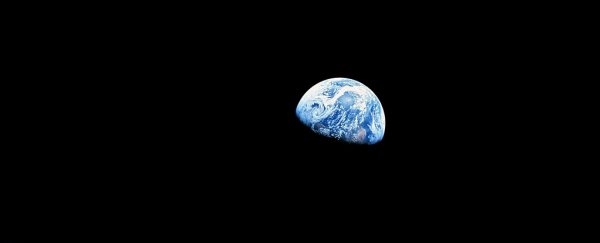If you've looked at the news today, you'd be forgiven for thinking a huge asteroid is on track to collide with Earth the day before the 2020 US Presidential election.
At least that's the takeaway from quite a few news outlets. And, understandably, some people are freaking out. In a year with a literal pandemic, an asteroid collision really just puts a cherry on the top of a Terrible, Horrible, No Good, Very Bad cake.
But we have good news for you! Despite the headlines, there's no need to worry about this particular asteroid – known as 2018VP1.
2018VP1 is not a surprise to scientists. As its name suggests, it was discovered back in 2018 while it was around 450,000 kilometres (280,000 miles) away from Earth.
It's got a two-year orbital period, and it's currently on its way back around again towards us.
Fortunately, this is not one of the many asteroids that we don't know about until they've already exploded, or flown by.
This time though, the Apollo-class asteroid is estimated to come within 4,994.76 kilometres of Earth. That's really close in space terms.
And because it's so close, there's a slight chance (1 in 240 or 0.41 percent) that it'll hit Earth on 2 November 2020 – the day before the US Presidential election.
Asteroid 2018VP1 is very small, approx. 6.5 feet, and poses no threat to Earth! It currently has a 0.41% chance of entering our planet’s atmosphere, but if it did, it would disintegrate due to its extremely small size.
— NASA Asteroid Watch (@AsteroidWatch) August 23, 2020
Considering the stakes and the year we're all having, maybe a 1 in 240 chance still feels a little high for comfort. We get it.
Well, we have even better news. Even if 2018VP1 is an asteroid lucky enough to have a date with our pale blue dot, the overwhelming odds are that it still won't hurt you.
Why? Well, it's only the size of a small car - around 2 metres (7 feet) in diameter. That kind of asteroid just doesn't have the girth for large-scale damage.
NASA's list of potentially hazardous objects has a cut off minimum of 140 metres (460 feet). The asteroid that killed the dinosaurs was at minimum 10 kilometres (6 miles) in diameter on impact, after it lost some of its volume in its descent.
Asteroids the size of 2018VP1 will easily burn up in the atmosphere long before they make it to the ground.
So, although there's every chance that one day a killer asteroid might finally crash into Earth, 2018VP1 isn't that asteroid.
But that doesn't mean we can't be prepared for asteroids that do pose a risk. NASA and other space agencies around the world are working on making us better at detecting these 'near earth objects', and one day, potentially even deflecting them.
So, for the moment at least, the US November election will be going ahead - or, at least, this asteroid isn't going to put a dent in the democratic process.
We're not sure how these stories got started, but not long after, NASA Asteroid Watch tweeted a response explaining the size, and (very low) likelihood of impact.
2020 has been quite the year, but at least we don't have to add 'deadly asteroid' to the list of horrors. At least, not yet.
